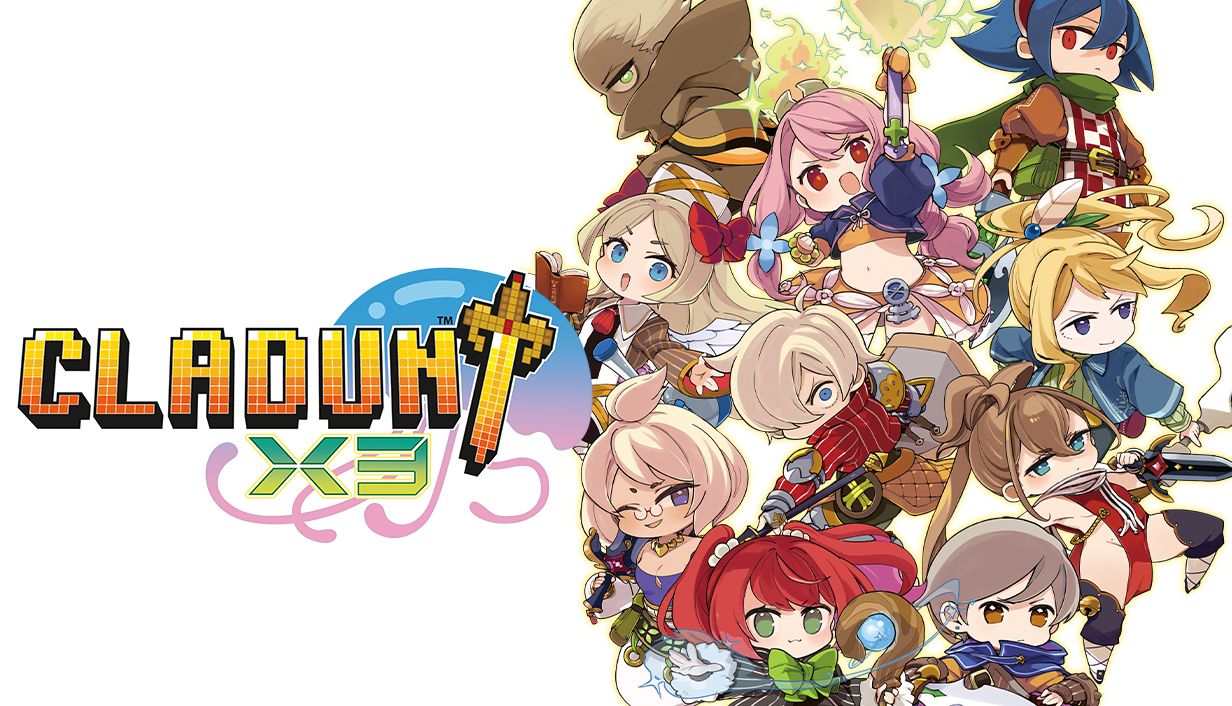The PlayStation Portable was an iconic homestead for niche RPGs, cementing companies like Nippon Ichi Software as small but permanent fixtures in the video game landscape. One such series that started there is *Cladun*, which combined retro gaming aesthetics with the enduring fixtures of contemporary, premium handheld gaming.
While *Cladun* struggled a bit to survive the PlayStation Vita’s relative floundering, the arrival of the Nintendo Switch (and eventually the Switch 2) provides the perfect opportunity for a comeback. *Cladun X3* is a peculiar title for a few reasons, but in a world full of dungeon-crawling RPGs, there isn’t much else quite like it.
### What’s *Cladun X3* About?
At its core, *Cladun X3* is about a death game — but not in the same vein as something like *Danganronpa*. Instead, it features an immortal jellyfish-like character who runs a mysterious island called Arcanus Cella, where villains are summoned from across time and space. The premise? These villains are forced to fight each other to keep them from becoming menaces to society.
You’re one such villain, waking up on the island with no memories from before. Still, while you’re here, the best you can do is power up and participate in the chaos.
### Gameplay: Dungeons, Grinding, and Progression
To power up, you’ll be diving into dungeons—so many dungeons. There are story dungeons, random dungeons, and map dungeons… you get the idea. The core gameplay loop is fun and simple, designed for fast and furious, bite-sized sessions.
*Cladun’s* dungeons are short, lasting only a few minutes. The idea is to run through as quickly as possible: blasting enemies, avoiding traps, and searching for the exit. While you can be more thorough to find treasures and hidden goodies, you’re generally discouraged from doing so unless you need to grind.
Speaking of grinding, it’s unavoidable. The game’s progression is unusual—it isn’t just about leveling up (though that’s part of it). A major component involves *Magic Circles*—progression maps where you assign sub-characters to tracks fueled by mana points. On these tracks, you place stat-boosting artifacts leading to your main character.
If that sounds complicated, that’s because it is!
Sub-characters act as shields for your main hero, absorbing damage before you do. However, if they get knocked out, you lose the benefits from their lanes on the equipped Magic Circle, potentially derailing your offensive or defensive abilities for the rest of the dungeon.
As you play, you’ll collect more mana, stronger artifacts, and new Magic Circles to experiment with. Managing this system can be a real pain. The gains feel incremental—for example, one point of attack (ATK) may cost three mana, but two points cost seven. Since you typically gain mana at a rate of one or two per level, progress can feel slow.
Unlocking more complex Magic Circles with additional character slots compounds the problem. Choosing a new Circle means starting over with artifact placement, meaning you’ll spend a lot of time poring over menus, doing “mana math,” and trying desperately to optimize your setup.
Meanwhile, enemies gain deeper health pools and hit harder as you progress, and unless you get lucky with item drops, your gear can only carry you so far. The difficulty spikes to the point where just taking a few hits (your defense is halved when you run, by the way) can knock a sub-character out, nullifying your buffs in seconds.
Later dungeons fill the screen with enemies wielding massive area-of-effect attacks, forcing combat to slow down considerably. You have to play more cautiously as foes get faster, stronger, and more numerous.
### Grinding: A Necessary Evil
Bonus dungeons—called ran-geons and map-geons—should serve as ideal venues for grinding. These randomized dungeons show up early, giving players an opportunity to level up and farm loot.
However, it’s easy to get stuck in an unfavorable situation. If you find yourself overmatched, escaping is your only option. Normal escape exits spawn at random, so if one doesn’t appear, you’re forced to run until an exit pops up, give up, or risk dying.
Death is harsh in *Cladun X3*: you lose all your items and most of your experience points and money. Because of this, the safer option is replaying a recently cleared story dungeon repeatedly to grind levels—a tedious and monotonous process.
### Making *Cladun* Your Own
Despite the grinding woes, there’s one standout feature that might fly under most players’ radars.
Both your main character and sub-characters aren’t fixed story participants. Instead, they’re custom recruits, a design reminiscent of *Dragon Quest 3*, but with a completely unhinged level of customization.
Nearly every aspect of *Cladun X3* is customizable. You can design your own sprites from scratch or tweak existing templates—including equipment. Flavor text, hub maps, and more can also be personalized.
Even more impressively, the game includes a fully-fledged music composition tool, letting you write and assign your own background music across pretty much the entire game. It’s absurd—in a good way.
If you’re the creative type and want a laid-back dopamine-producing grind loop, this is your playground. You can immerse yourself in an environment where you design your own little retro RPG world, akin to an Animal Crossing for RPG enthusiasts. It stops just short of becoming a new kind of RPG Maker-like experience.
And if customization isn’t your thing, you can completely ignore it and still enjoy the story without missing out.
### Final Thoughts
If *Cladun X3* were tuned just a bit differently, it could be a perfect time-killing grindfest. Choosing characters, customizing them to your liking, and taking them into bite-sized dungeons for a satisfying, numbers-driven session sounds like a great formula.
Unfortunately, the heavy investment needed to optimize Magic Circles for relatively small gains, combined with the steep difficulty curve that rapidly outpaces your progress, makes the experience feel arduous.
I enjoy grinding to some extent, but *Cladun X3* asks for more time than the rewards justify. While I respect the wild creativity the customization tools offer, the game’s demand for attention in exchange for flimsy rewards struggles to capture long-term engagement.
*Cladun X3* launches on September 26, 2025, for Nintendo Switch, PC, and PlayStation 4 and 5. A Switch code was provided by the publisher for review.
https://www.shacknews.com/article/146007/cladun-x3-review-score


